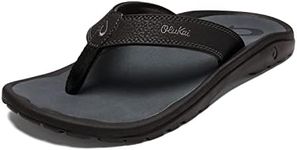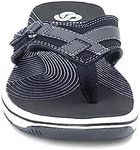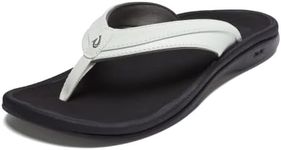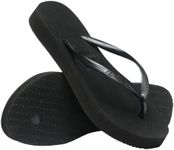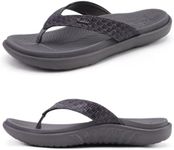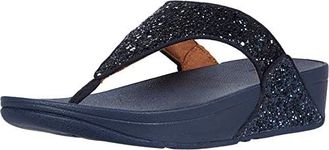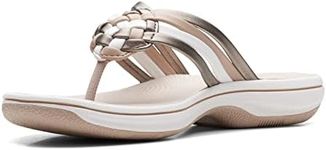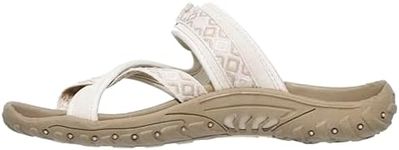Buying Guide for the Best Walking Flip Flops
Choosing the right walking flip-flops is important for both comfort and foot health, especially if you plan to wear them for extended periods or cover longer distances. Unlike basic beach flip-flops, walking flip-flops are designed to provide better support, cushioning, and durability. When shopping, focus on how the flip-flops will be used—whether for casual strolls, travel, or daily errands—and consider your own foot shape and any specific needs like arch support or slip resistance.Arch SupportArch support refers to how well the flip-flop supports the natural curve of your foot. This is important because good arch support can help prevent foot fatigue and pain, especially if you have flat feet or high arches. Flip-flops range from flat, unsupportive soles to those with contoured footbeds that cradle your arch. If you have normal arches and only wear flip-flops occasionally, moderate support may be enough. For those with flat feet, high arches, or who plan to walk a lot, look for flip-flops with pronounced arch support to keep your feet comfortable and healthy.
CushioningCushioning is the amount of padding in the sole of the flip-flop, which absorbs shock as you walk. This is important for comfort, especially on hard surfaces or during long walks. Flip-flops can have thin, basic soles or thick, cushioned ones made from materials like EVA foam or memory foam. If you’ll be walking long distances or have sensitive feet, choose flip-flops with thicker, softer cushioning. For short, casual use, lighter cushioning may be sufficient.
Sole Material and GripThe sole material affects both comfort and durability, while the grip determines how well the flip-flop prevents slipping. Rubber soles are common and provide good traction, making them safer for wet or uneven surfaces. Some flip-flops have textured or patterned soles for extra grip. If you plan to walk on slippery or varied terrain, prioritize flip-flops with sturdy, non-slip soles. For mostly indoor or dry use, basic rubber soles may be enough.
Strap Design and ComfortThe straps hold the flip-flop on your foot and can be made from materials like rubber, fabric, or leather. Comfortable straps are important to prevent chafing or blisters, especially during long walks. Some straps are padded or lined for extra comfort. If you have sensitive skin or plan to wear flip-flops for hours, look for soft, wide, or padded straps. For occasional use, standard straps may suffice.
Fit and SizingFit and sizing ensure the flip-flop stays securely on your foot and doesn’t cause discomfort. A good fit means your heel and toes don’t hang over the edges, and the straps aren’t too tight or too loose. Flip-flops come in whole or half sizes, and some brands run larger or smaller. Always try them on if possible, or check sizing guides. If you have wide or narrow feet, look for options that accommodate your foot shape to avoid rubbing or slipping.
DurabilityDurability refers to how well the flip-flops hold up over time, especially with frequent use. This is important if you plan to walk a lot or use them daily. Durable flip-flops are made from high-quality materials and have reinforced soles and straps. If you need flip-flops for regular walking or travel, choose ones known for lasting longer. For occasional or seasonal use, basic durability may be enough.

